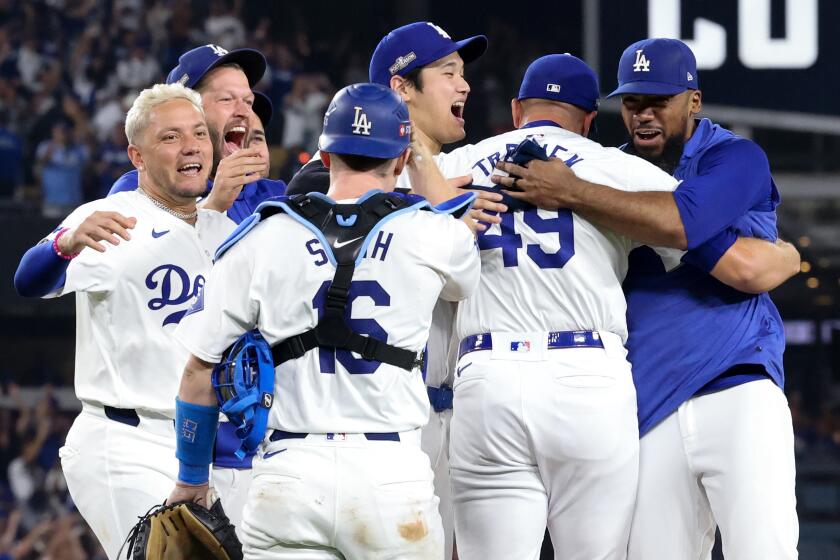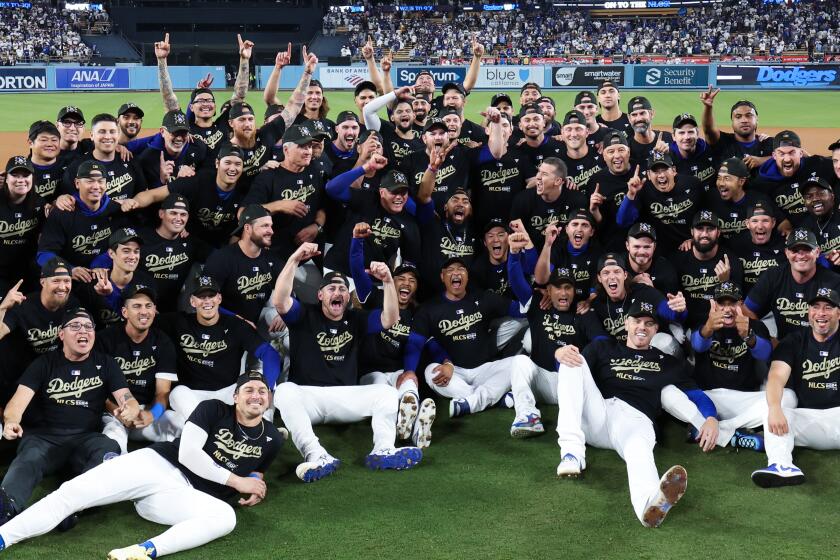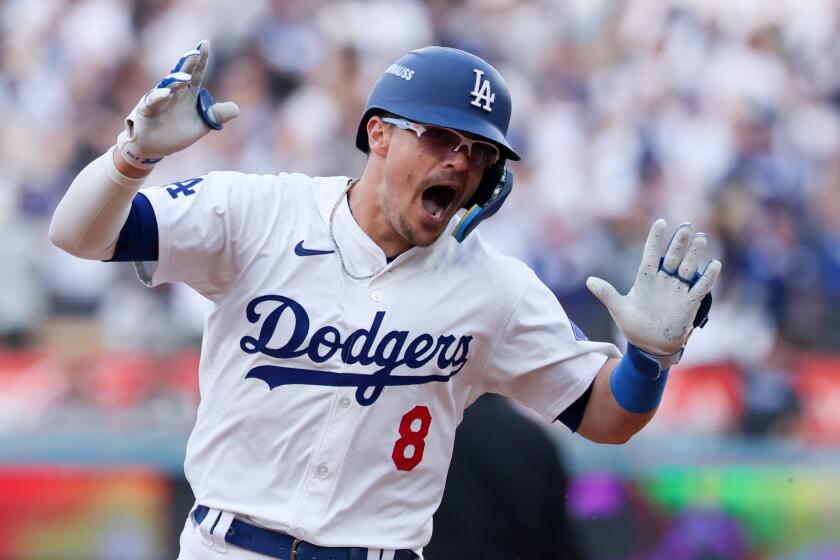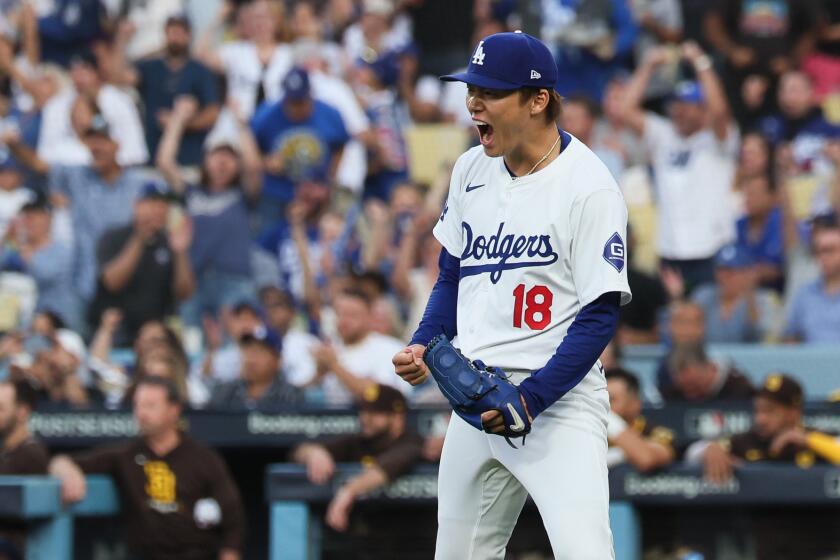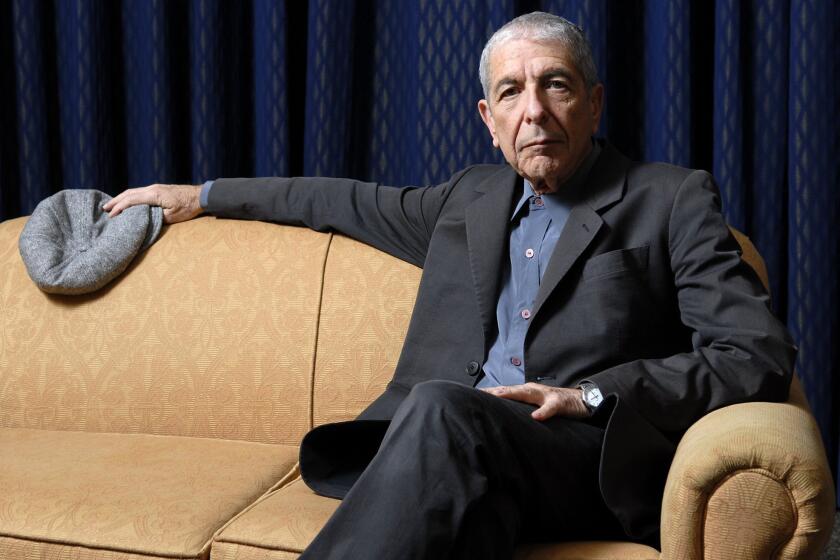In the postgame clubhouse following Game 5 of the National League Division Series, the expletives flowed as freely as showers of beer and champagne.
Actually, it started even before then.
What’s different about this year’s Dodgers team, Game 5 hero Kiké Hernández was asked during a postgame Fox television interview out on the field.
“The fact that we don’t give a f—,” Hernández grinned.
It was a message similar to one Hernández shared with the team as the Dodgers stormed back from a two-games-to-one deficit in the NLDS to defeat the San Diego Padres, one players proudly recounted — expletive included.
Next up on the Dodgers’ October conquest: the New York Mets, who will travel to Dodger Stadium for the start of a best-of-seven NL Championship Series on Sunday. First pitch is at 5:15 p.m.
“That Mets team is playing really good baseball,” manager Dave Roberts said, keeping his language G-rated. “But we’ll be ready.”
If the Dodgers’ place in the NLCS is a surprise, then the Mets’ has been nothing short of a miracle. What was supposed to be a reset season with a bloated payroll has instead borne an unexpected championship chase, with the team sneaking into the playoffs as a five-seed before dispatching the NL Central champion Milwaukee Brewers and NL East champion Philadelphia Phillies.
As the Dodgers embark on a quick turnaround from Game 5 to another Game 1, here are nine things to know about their NLCS opponent — and the concerns the upstart Mets might pose in the best-of-seven series.


